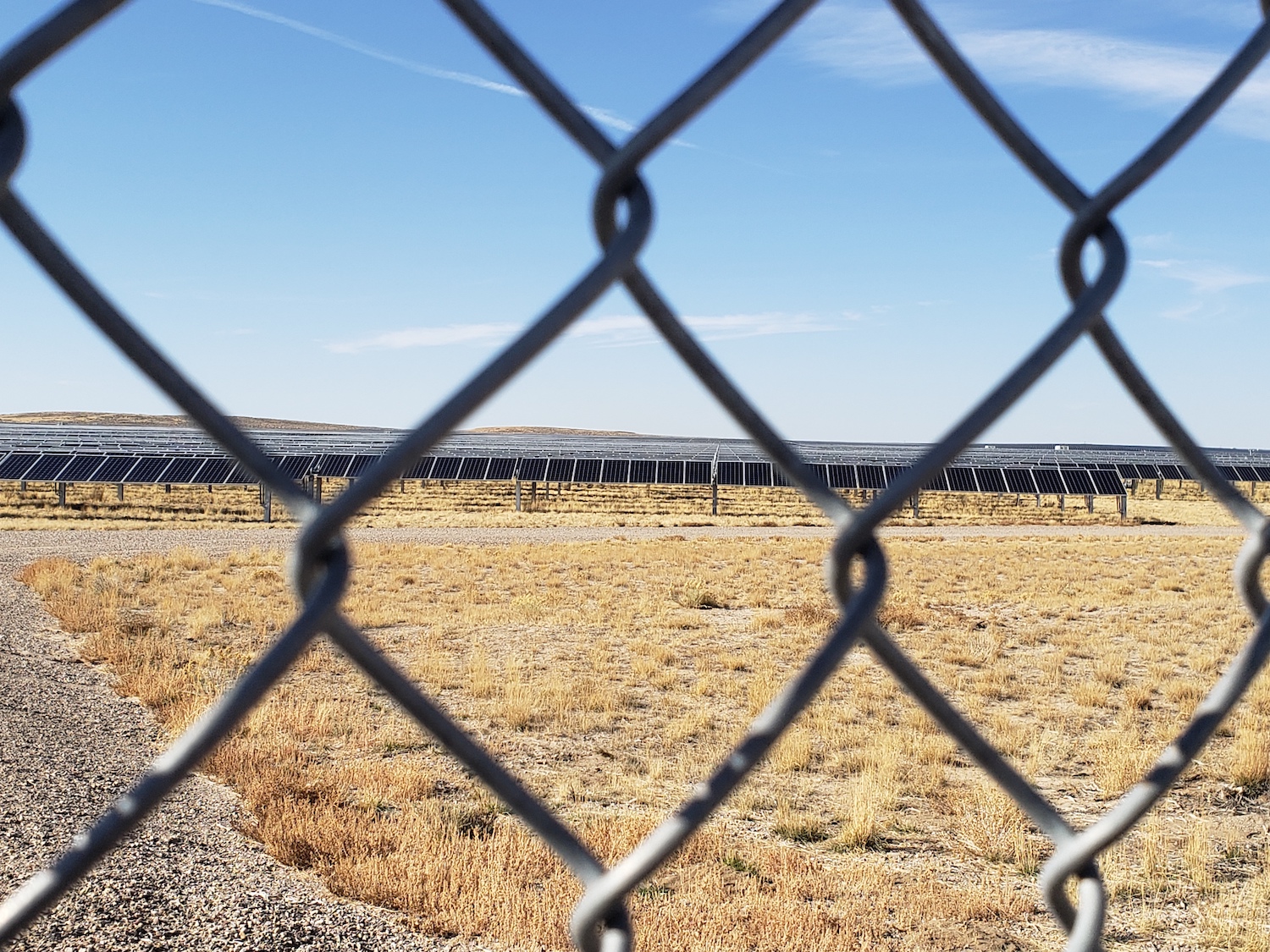Irrelevant
Well-known member
permanent development of public land is a hard no. A hell no. A completely change the way I vote, no. I don't care if it's Mike Lee and low cost housing, O&G in refineries, or the greenist of green solar panels.
Follow along with the video below to see how to install our site as a web app on your home screen.
Note: This feature may not be available in some browsers.
As am I. Regardless of the project, cleanup costs need to be part of the economicsI'm ok with that.
Taxpayers pick up too much cost & debt from these kinds of developments anyway.
@Ben Lamb
25 gigwatts = 183,000
NG Combined Cycle
1000MW, 33 acres (using Athen's station in Athens NY for area) *25 = 33 acres
7.40 cubic feet of gas used per/kWh (per eia)
1000MW = 8,760,000,000kwh a year (not how this math actually works, this isn't how name plate capacity works but whatever)
64,824,000,000 cubic feet of gas a year
1,944,720,000,000 cubic feet of gas in 30 years
How much does a well produce
4,041,418,780 cum first 36 months production for Haynesville well
3,284,514,310 cum first 36 months production for Marcellus well
To simplify the decline curve let's just say it's 0 after 3 years.
30 years =40,414,187,800 and 10 wells in the Haynesville
30 years = 32,845,143,100 and 10 wells in the Marcellus
Therefore you need 481 Haynesville wells to power a 1000MW for 30 years, and 592 Marcellus wells.
Let's say 2 well pads at 4acres (it's going to be way more than that, but let's say two to make up for SWDs/ pipelines/ ect.
962 acres +33 acre pad = 995
So 995acres for 1000MW for 30 years for a NG combined cycle plant + sourcing the gas.
If we use @MTGomer's 150MW for 1100 acres that means solar is 6.5X less efficient as far as surface use goes all in as Natural gas.
Now there is the global warming, sourcing solar pannels... yada yada yada.
Generally speaking though I think solar is a pretty myopic use of public lands given it's wildly inefficient use of space.
I'm not sure what a uranium mine + nuclear plant all in would require but I bet it's a fraction of OG.
It's possible my math is way off... but in my mind solar should be restricted to rooftops, roads, parking lots, etc in already developed urban areas.
Hell here's 200 acres of basically contiguous parking lot in the heart of Denver
View attachment 225024
or DIA... Denver owns 30,000 acres around the airport? I can't imagine the roar of landing planes 24/7 is great for critters... what about there?
Best of luck finding a candidate to cast a vote for. IMO any candidate that runs on a platform of no new development of any kind on pubic land is either a fool or lying.permanent development of public land is a hard no. A hell no. A completely change the way I vote, no. I don't care if it's Mike Lee and low cost housing, O&G in refineries, or the greenist of green solar panels.
As am I. Regardless of the project, cleanup costs need to be part of the economics
There was time when I think your second line was correct. Not certain I would agree with projects started today. Maybe I have just been fortunate to work for operations that have not saddled taxpayers with either cost or debt.
I've met a few of those folks in my time. Your cynicism is justified.To be fair, my experience with industry is primarily at the gov't relations end. Industry tends to send people who lie to your face to deal with folks, not your most earnest or thoughtful (There's a few exceptions to that rule, like one of the old Jonah Field guys).
At 30 years a modern gas well is probably being plugged and then you could put solar panels on the landYOu still leave out the fact that the site for solar can be used infinitely, or until the comet hits us or the sun burns out, versus limited application of infill, and new development to keep that flow steady. So I think you're missing a huge part of the issue at hand relative to land use for fossil fuels versus renewables.
But ultimately, I agree that we should be doing urban development, etc. You could turn huge portions of the Rust Belt into solar farms with absolutely zero displacement, etc. There's still issues with solar panels reflecting light, heat, etc, but that can be engineered out, and I think @jryoung has talked about that in the past, but I could be wrong.
I've met a few of those folks in my time. Your cynicism is justified.
At 30 years a modern gas well is probably being plugged and then you could put solar panels on the land
and that's kinda the point with solar though right? Like best case scenario the private company keeps upgrading them so that BLM is defacto private for the next 100 years or whatever.
There are lots of places to put solar panels, I'm just not in support of public lands. (mostly)
This is the validation I needed today. Thanks buddy.
@Wind Gypsy all true on the micro-grid, but don't forget the battery storage issue which is making some fairly big leaps relative to home/small business usage. A constant supply of electricity is the goal. it doesn't matter if it's stored or immediately produced.
Hippies had it right... need to stop paving paradiseI want you on my dodgeball team.
I don't support it either, just like I don't support more O&G drilling on public.
I say we kick 'em all off and take the companies for ourselves. Our benevolence will know some bounds.
Batteries can help for sure. Most of the new utility solar projects ive been involved with include them. They are expensive and would need to be oversized significantly to eliminate additional backup though. Reliable function at a utility scale is also less than admirable from what I've seen.
Hippies had it right... need to stop paving paradise
Lots of wells go longer than 30 years. It's not as if an oil well is not there one day, there the next, and then gone without a trace a short time later. I can walk out to the Badlands of ND and look at wells that have been there for decades, since before I was born, and are still there today. There are over 1,400 wells in ND that are older than 30 years and still actively producing. Just under 400 of those wells were drilled before 1972, 154 of those were drilled in 1960 or earlier.At 30 years a modern gas well is probably being plugged and then you could put solar panels on the land
and that's kinda the point with solar though right? Like best case scenario the private company keeps upgrading them so that BLM is defacto private for the next 100 years or whatever.
There are lots of places to put solar panels, I'm just not in support of public lands. (mostly)
I've been voting for fools my entire life, call me an expert at picking them.Best of luck finding a candidate to cast a vote for. IMO any candidate that runs on a platform of no new development of any kind on pubic land is either a fool or lying.
Clay and weeds are things critters can at least walk across.Lots of wells go longer than 30 years. Either way, we're talking generational sacrifices for energy development. It's not as if an oil well is not there one day, there the next, and then gone without a trace a short time later. I can walk out to the Badlands of ND and look at wells that have been there for decades, since before I was born, and are still there today. There are over 1,400 wells in ND that are older than 30 years and still actively producing. Just under 400 of those wells were drilled before 1972, 154 of those were drilled in 1960 or earlier.
I can also walk out in the Badlands and find old "reclaimed" well pads from the 80s that have been through the reclamation process, but that spot is now nothing but clay and weeds sitting on an obviously man-made shelf on the side of a butte/hill.

Lots of wells go longer than 30 years. Either way, we're talking generational sacrifices for energy development. It's not as if an oil well is not there one day, there the next, and then gone without a trace a short time later. I can walk out to the Badlands of ND and look at wells that have been there for decades, since before I was born, and are still there today. There are over 1,400 wells in ND that are older than 30 years and still actively producing. Just under 400 of those wells were drilled before 1972, 154 of those were drilled in 1960 or earlier.
I can also walk out in the Badlands and find old "reclaimed" well pads from the 80s that have been through the reclamation process but that spot it nothing but clay and weeds sitting on an obviously man-made shelf.
Absolutely there is a difference. No one argues it's better for that immediate area than OG development. But I defer to Ben's points when looking at the big picture.Clay and weeds are things critters can at least walk across.

Report: industrial solar disrupts big-game movements - WyoFile
Paper is the first in the country to examine and quantify the impact of solar fields on big game. It isn’t anti-solar, author says, but it does ask land managers and solar companies to think about siting and design.wyofile.com
I saw several old wellheads in the WY range while elk hunting. You're not elk hunting amidst a solar field, it's devoid of all life or other uses.
IMO it's similar to the idea that vegetarians are better for the planet vs free range beef. There is exactly zero wildlife value in a lettuce field in Salinas CA vs I can hunt deer and elk in the same allotments my parents beef comes from.
It's only political to compare O&G on public to solar as a ploy to pit a lesser of one evil against another. You HAVE to drill/mine O&G where it exists. You can place solar anywhere.
